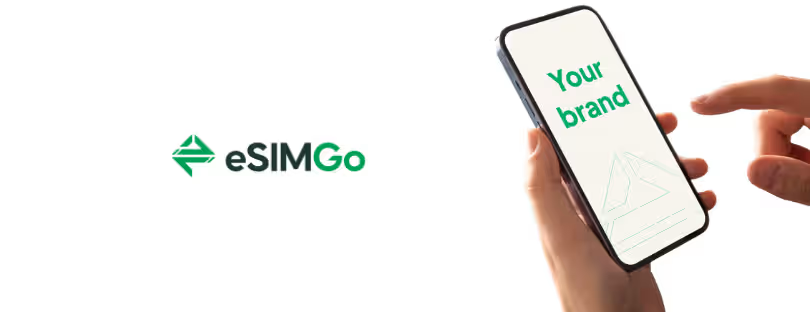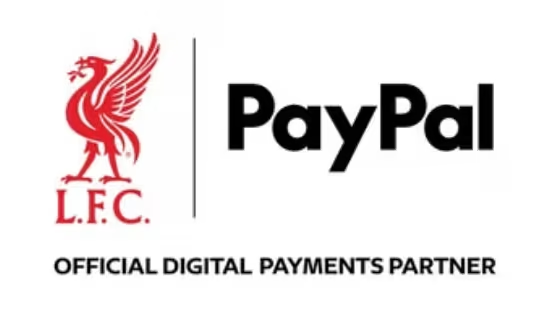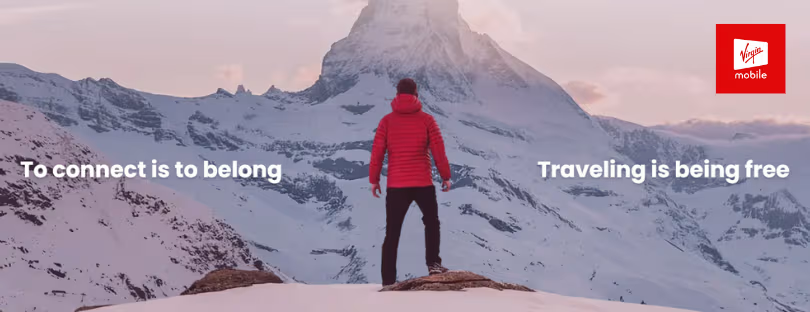
eSIM Go Unveils Full-Branded eSIM Experience for API Partners
If you’ve followed the evolution of the eSIM ecosystem, you know the competition is no longer just about wholesale pricing or coverage maps. It’s about who owns the customer experience—and who gets remembered when the user glances at the top of their phone screen while roaming in Tokyo or taps to install a new data plan in NYC.
That’s the battleground eSIM Go stepped into today with the launch of its brand-new eSIM branding suite, an upgrade that finally lets API partners put their brand—not a generic service name—front and center across every touchpoint of the eSIM journey. And if you’re in travel, telecom, fintech, or an enterprise operating with sub-brands or B2B partners of your own, this one matters.
Let’s break down what eSIM Go just changed… and why the timing isn’t accidental.
What this new brand suite actually changes
Up until now, most eSIM providers have offered some branding—logos in dashboards, maybe custom QR codes, a touch of customization in the installation flow. But the real friction has always been in the technical parts of the eSIM process that users actually see, such as:
- the installation name
- the SMS sender ID
- the SPN (Service Provider Network) name appearing on the phone
- the wording inside Apple’s carrier bundle
- default naming conventions on Android
These aren’t cosmetic details. They’re trust signals.
eSIM Go now allows partners to tailor each of these elements to reflect their own brand—and do it in real time, at the point of order, with no need to manage inventory or maintain dozens of pre-generated profiles.
In their words: “BYOB—Bring Your Own Brand.”
Here’s what eSIM Go partners can now control.
H5 Custom branding features you can configure via API
- Custom eSIM installation name
- Branded SMS sender ID
- Custom QR codes with partner colors and logos
- Personalised install name featuring the partner’s brand
- Customised SPN name (what appears at the top of the device screen)
- Update network names to any brand
- Configure Android and iOS app values
- Access to eSIM Go’s Apple carrier bundle for a shorter, simpler iOS install flow
The big differentiator? Multiple brand profiles per account.
This is the sleeper feature—something that sounds technical but will have an enormous impact for distributors, aggregators, marketplaces, travel apps, loyalty platforms, and telecom operators with multiple white-label partners.
Instead of forcing all partners into one identity or making them juggle endless XML files and inventories, eSIM Go lets them assign branding dynamically, per order.
As Chief Product Officer, Darren Shaw puts it:
“True loyalty is in the end-to-end experience… we’re making it simple to elevate any brand and create truly unique and immersive eSIM experiences.”
This is where the market is heading, and eSIM Go just moved the goalposts.
Why branding matters more than ever in the eSIM economy
In the physical SIM era, branding was literal—your logo printed on plastic.
With eSIMs, that disappeared. Overnight.
What filled the gap? Confusion.
Users often install an eSIM only to find an anonymous profile name, a cryptic network tag, or surprise notifications from a sender they never heard of. And in the subscription era, that lack of clarity doesn’t just cause friction—it kills retention.
READ MORE: eSIM as a Service: Why APIs Are Powering the Next Wave of Travel Tech Innovation
A fully branded eSIM experience solves several real problems:
- Trust: Users know who they’re buying from and who to contact.
- Consistency: Your brand stays present through every installation, update, and SMS.
- Loyalty: A branded SPN name on the device keeps your service top-of-mind daily.
- Upselling: Recognition increases the chance that users will buy another package with the same brand.
- Clarity: Reduced support tickets caused by confusion around generic labels.
Brands have spent decades fighting for visibility on mobile home screens, inside apps, and inside wallets. Now they can reclaim visibility inside the network layer itself.
That’s a power move.
Who should be paying attention to this
eSIM Go covers 1,200+ networks in 190+ countries, and they’ve quietly become one of the major infrastructure players powering large travel brands, MVNOs, fintechs, and embedded connectivity platforms. But with this launch, the appeal widens dramatically.
This is particularly useful if you’re:
- a travel brand selling connectivity as an ancillary service
- an MVNO or telco with sub-brands or roaming solutions
- a fintech using eSIM as a loyalty perk
- a SaaS platform bundling connectivity into your product
- an enterprise running an ecosystem of white-label partners
- a marketplace selling mobility or travel services
And if you need multi-brand support, you’re basically out of options—because other competitors don’t offer this level of flexible, real-time branding at all.
 How does this compare with industry trends and competitors
How does this compare with industry trends and competitors
Let’s put today’s news into perspective.
Most eSIM infrastructure providers—such as 1GLOBAL, MagicSIM, or even larger MVNE/MVNA platforms—limit customization to:
- a generic installation name
- basic white-label portals
- in some cases, a custom QR code
- occasionally, co-branding
But they typically do not allow:
- dynamic SPN name branding
- branded SMS sender IDs
- multiple brands under one master account
- real-time brand switching per order
- full carrier bundle customization for Apple devices
The only platforms offering anything similar tend to be high-end MNO/MVNO-grade systems requiring deep integration, high volume, or long-term contracts—hardly accessible to travel brands, booking platforms, OTA players, or fintechs experimenting with connectivity.
Meanwhile, the industry is moving in two key directions, according to GSMA Intelligence and Juniper Research:
- eSIM as a loyalty and retention tool, not just a commodity data product.
- Deep embedding of telecom features into non-telecom apps—banking, travel, hospitality, mobility, payments.
To support those shifts, branding is essential.
eSIM Go’s move aligns perfectly with both trends, and they’re now positioned as one of the few companies offering enterprise-grade branding with SMB-friendly accessibility.
What this means for the future of branded connectivity
This launch is a glimpse of where the eSIM market is heading:
Connectivity will become invisible—until you need it, and then you’ll remember the brand that delivered effortlessly.
For years, the biggest challenge in eSIM distribution has been differentiation. When everyone sells digital profiles on nearly identical network agreements, real competitive advantage moves upstream:
- user experience
- ease of installation
- brand trust
- quality of support
- post-purchase engagement
- recurring revenue possibilities
eSIM Go is not just rolling out a branding update—they’re setting the stage for the next phase of embedded connectivity, where UX becomes the battleground.
This also helps partners insulate themselves from rising competition. As emerging eSIM marketplaces and low-cost providers flood the space, recognizable branding becomes a defensive moat—especially in travel, where repeat usage is everything.
Conclusion
eSIM Go’s new branding suite marks a meaningful shift in how B2B players can own, shape, and elevate the eSIM experience. While competitors may offer bits of customization, few match this level of control, multi-brand flexibility, and real-time configuration. With industry analysts (GSMA Intelligence, Juniper Research) pointing to branded connectivity as a key differentiator in the next wave of eSIM adoption, eSIM Go is positioning its partners at the front of that curve rather than behind it.
For travel brands, MVNOs, fintechs, and digital platforms, this isn’t just another technical upgrade—it’s an opportunity to turn a formerly invisible utility into a brand asset that users actually recognize and trust.
If the future of connectivity is frictionless, branded, and embedded across ecosystems, eSIM Go just handed partners the toolkit to get there early.







 How does this compare with industry trends and competitors
How does this compare with industry trends and competitors


